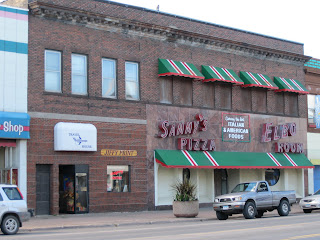






ART 102: Two-Dimensional Design
PROJECT #4: Color Schemes with Linear Perspective
Due Tuesday, October 12
Color Schemes (examples above)
1. Complimentary (across from each other) 2. Monochromatic (one hue with tints, tones and shades) 3. Analogous (next to each other on color wheel) 4. Neutral (mix compliments) and 5. Warm/Cool (use both in same composition)
Materials:
Five pieces of drawing paper each one: 7 x 9 inches
Sketchbook
Drawing pencils
Gouache paint, all colors
Watercolor brushes, round and flat, various sizes
Surface for mixing paint
Black mat board for final presentation (cut 1” border on all four sides for each of the five compositions. You will have five separate mounted compositions.
2-sides adhesive paper or UHU (acid free) glue stick (or both) for mounting or your choice what works!
Objectives: To create five compositions that use five different colors schemes using the same drawing five times that is inspired by a contour drawing of your Superior Historical Society building. Go to the building take a photo to look at later and draw it in your sketchbook. Copy your drawing again for each color scheme. The color schemes are: monochromatic, analogous, complementary, neutral, and warm/cool. Please label each piece with your name, the name of the building and the color scheme.
Procedure:
Step #1: draw in your sketchbook three or more drawings of your building.
Resource for 2-Point Linear Perspective: http://www.youtube.com/watch?v=felys-u4nfk
Step #2: Choose one of the drawings and reproduce it 5 times on the drawing paper.
Step #3: use gouache paint to create five small compositions (each using the same drawing, so you draw it five times on 5 different pieces of paper), each a different color scheme. Make the color schemes distinct from each other.
The Final Products
Mount the finished work on a black matt board that is exactly 1 inch larger than the drawing on all sides. You will have five separate pieces.
Assessment/Evaluation will include:
1. Use of unity, variety, emphasis (focal point) and contrast of values
2. Interesting and surprising concept that displays a mood/emotion.
3. Craft and presentation:
- drawing surface has been erased of smudges
- measurements are concise (use your ruler for the grid)
- drawing is completed as instructed
- overall presentation is clean and crisp (use sharp blades!)
- present your best work
QUESTIONS!!!!
khubbard@uwsuper.edu












